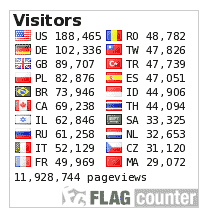Improving Students’ Reading Comprehension of Descriptive Text through Cognitive Strategy
Keywords:
Students’ reading comprehension of descriptive text, cognitive strategyAbstract
This research aimed to explain the extent to which cognitive strategy can improve the students’ reading comprehension and what factors that influence the changes of the students’ reading ability by implementing cognitive strategy. This research was a classroom action research which consists of two cycles and four meetings of each cycle. Three meetings for teaching reading comprehension of descriptive text by using cognitive strategy and another meeting for reading comprehension of descriptive text test. The research was conducted from April, 30 2013 up to May, 30 2013. The instrument used to collect the data were reading comprehension of descriptive text test, observation sheets, field notes, and interview which were helped by a collaborator. The finding revealed that the implementation of cognitive strategy could better improve students’ reading comprehension of descriptive text at grade VII-2 of SMPN 1 Indra Praja Tembilahan. The improvement was confirmed by the increasing average students’ score, the average score of students in cycle I was 70,72 and in cycle II was 78,10. The factors that influence the students’ reading comprehension during the application of cognitive strategy were the materials, the students’ reading motivation, and the teacher’s role to students. Finally, the classroom action research by using cognitive strategy could improve the students’ reading comprehension of descriptive text at grade VII-2 SMPN 1 Indra Praja Tembilahan.
Downloads
References
Cavanagh, Jane. 1998. Text Types. English K-6 Syllabuss. Retrieved at February, 18th 2013 from http://goldfieldsliteracy.wikispaces.com/file/view/Yvonne++Text+Types+_A_+-+PDF.pdf
Civelek and Ozek. 2006. A Study on the Use of Cognitive Reading Strategies by ELT Students. The Asian EFL Journal, Professional Teachers Articles. Retrieved at march, 18th 2013 from
http://www.asian.efl.jpurnal.com/PTA.August.06.Ozec&Civalek.pdf
Gerot, L. and Wignell,P. 1994. Making Sense of Functiona; Grammar. Australia: Gerd Stabler.
Hopkins, D. 1985. A teacher’s guide to classroom research. Philadelphia: Open University Press.
Kemmis, Stephen and Mc Taggart Robin.1988.The Action Research Planner. Victoria: Deakin University.
Khezrlou,S. 2012. Cognitive Strategy Training: Improving Reading Comprehension in the Language Classroom. The Journal of Teaching Language Skills. Retrieved at march, 18th 2013 from
http://www.teaching.language.skill.journal/JTL53721319920200.pdf
Mukarto, dkk. 2007. English on Sky 1 for Junior High School Students Year VII. Jakarta: Erlangga.
Rosenshine, B and Meister,C. 1992. The Use of Scaffolds for Teaching Higher Level Cognitive Strategies. Retrieved at november, 12th 2013 from
http://www.ascd.org/ASCD/pdf/journals/ed_lead/el_199204_rosenshine.pdf
Sahan, Ahmet. 2012. Cognitive Reading Comprehension Strategies Employed by ELT Students. Retrieved at november, 12th 2013 from
http://sbe.erciyes.edu.tr/dergi/sayi_33/1.pdf
Syatriana, Eny. 2011. Developing the Students’ Reading Comprehension through Cognitive Reading Strategies of the First Year Students of SMAN 16 Makassar. Retrieved at november, 12th 2013 from
http://www.niu.edu/international/_images/Eny%20Syatriana.pdf
Oxford, Rebecca. 1990. Language Learning Strategies. What Every Teacher Should Know. Boston: Heinle&Heinle.
Published
How to Cite
Issue
Section
This is an open-access article distributed under the terms of the Creative Commons Attribution-ShareAlike 4.0 International License which permits unrestricted use, distribution, and reproduction in any medium. Users are allowed to read, download, copy, distribute, search, or link to full-text articles in this journal without asking by giving appropriate credit, providing a link to the license, and indicating if changes were made. All of the remixes, transform, or build upon the material must distribute the contributions under the same license as the original.











